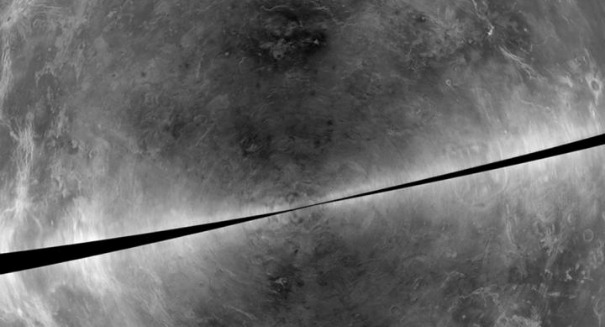
Thick clouds covering Venus have prevented all but specialized spacecraft from viewing the surface of our closest neighbor, but the new method could completely change how scientists observe the planet.
Mankind has already gotten a good look at the surface of Mars, even landing a rover to drive around on it, but it hasn’t been possible to even take a peak at the surface of our closest neighbor, Venus, without a specialized spacecraft — until now.
Thick clouds of carbon dioxide shroud the surface of Venus, preventing earthbound telescopes from viewing its surface, and in order to see it, space probes such as NASA’s Magellan spacecraft were required to use radar to spot features on the planet like mountains and craters, according to a Space Daily report.
Astronomers have been able to combine the National Science Foundation’s Green Bank Telescope (GBT) and the powerful radar transmitter at the NSF’s Arecibo Observatory to take detailed images of the planet’s surface without relying on a spacecraft. At 100 meters, the GBT is the largest fully steerable radio telescope in the world, and it is situated in the National Radio Quiet Zone and the West Virginia Radio Astronomy Zone, allowing it to take high-resolution images without radio interference.
The radar signals from Arecibo were able to penetrate the atmosphere of the planet — as well as our own — and then bounce back to be processed by the GBT radar.
By doing this, scientists will now be able to track changes on the surface of the planet by comparing images from different time periods. This could allow astronomers to spot active volcanos or other geologic processes that could shed light on the history of Venus.
Bruce Campbell, a senior scientist with the Center for Earth and Planetary Studies at the Smithsonian National Air and Space Museum in Washington, D.C., called the process of comparing images “painstaking,” but the work would provide a “wealth of insight” into surface activity on Venus, according to the Space Daily report.
Leave a Reply